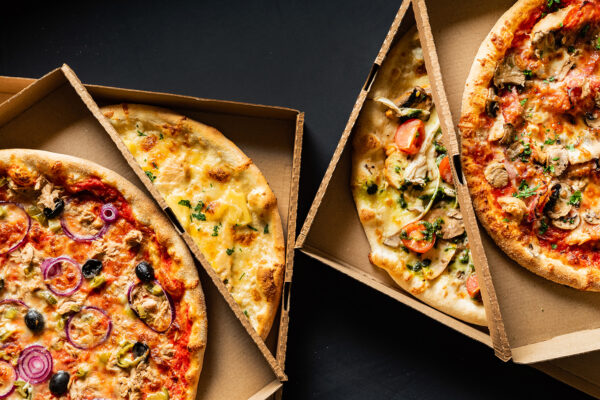Last week, we explored macro food trends we expect will impact the industry in 2020. From the push to digital to the rise in plant-based foods, new definitions for service and restaurants present big opportunities to foodservice and retailers.
As we approach the end of this decade, we’re starting to think about what we can anticipate for the next 10 years of food trends. In this blog, we’re going to take a deep dive into 7 micro food trends you should have on your radar for 2020. Consider how these trends will impact you, your products, and your customers.
Breakfast, brunch, brinner—oh my!
As the breakfast bubble deflates and options like all-day breakfast become the new normal, re-inventing breakfast options will be key to keeping the menu fresh and exciting. A number of casual chains have introduced brunch to drive traffic during slower dayparts, while multiple QSRs and c-stores added brunch burgers to the menu last year (and they score well with consumers – check them out in our SCORES database).
The lines between traditional meal times are blurred, which is par for the course now – chicken is becoming a new breakfast staple, while burgers, tacos, and salads are some of the fastest-growing formats on breakfast menus, according to Datassential MenuTrends. Consider how these changes will impact your entire menu or product line in 2020.
Eatertainment evolves
We have covered the rise of eatertainment extensively in the past: in our 2017 trend predictions, we noted that “next-generation eatertainment venues continue to spread across the country” in order to “get consumers out of their homes.” Since then, we’ve only seen the segment continue to change and evolve, with plenty of new concepts on the way in the years ahead. Japanese-style listening bars, where guests listen to albums on high-end audio equipment, are opening in New York, L.A., and Chicago, while smaller-format eatertainment venues, retail eatertainment, tech-centric venues, and “theatrical dining experiences” continue to pop up across the country.
Meanwhile, the food industry has begun looking for ways to merge with another entertainment subculture: esports. Twitch, the video game live streaming platform that Amazon purchased for nearly $1 billion, is now bigger than most cable networks in audience size, and today there are esports leagues, professional players, and massive global tournaments. Some restaurants are creating esports lounges, grocery and chain brands are sponsoring professional gaming teams or tournaments, and numerous food manufacturers are positioning themselves as gamers’ favorite snack and drink options while they play.
New wave tea
The tea industry has been quietly following in the footsteps of the third wave coffee movement for a number of years, and in the next few years it’s poised to reach a broader national market
as consumers get savvier about their tea and as the growing number of cafes across the country introduce premium, artisan options to the menu.
Dedicated tea cafes are also creating an upscale tea experience, with tea baristas who can explain origins and tasting notes, plus unique equipment to achieve the perfect steep, custom-made tea blends, and experiential options like matcha tea ceremonies.
Tablespreads
“Sit back and let us fill your table with an array of cold zakuski,” says the description of the Ruskie Zakuski Experience at Portland’s Kachka restaurant. An evolution of the small plates and “grazing tables” trends, tablespreads give diners a chance to try a little bit of everything, while also being perfect fodder for that “hover over the table” Instagram shot.
Check out Khao Noodle Shop in Dallas, where nothing is more than $8 and portions are small, which means plenty of diners order everything on the menu to fill the table. Want to do it yourself? Look for global inspiration such as mezze, banchan, salatim, etc.
South African cuisine
Interest in the varied cuisines of Africa has been growing in the U.S. for years, from the spices and stews of North African countries to the grains of East Africa. Now, interest is turning toward South Africa. South African wine is making a comeback, after years of drought had impacted the industry, with new premium varieties and styles. Numerous brands that specialize in biltong (South African jerky) are hitting mainstream store shelves at retailers like Whole Foods and Aldi, while South African tea is earning a prime place on both shelves and menus.
Piri piri sauce, perhaps most associated with South African chain Nando’s, has grown 44% on U.S. menus in the past 4 years (MenuTrends). Or check out braai, aka South African BBQ, at restaurants like New York’s Braai Wine & Cuisine or Baobab BBQ in Chicago.
Hyper-regionality
In our 2016 trend predictions, we noted that younger generations, who were not only more multicultural themselves but also more interested in global cuisines compared to other generations, were “moving beyond painting ethnic cuisine with a broad brush and instead focusing on individual dishes.” Rather than going out for Mexican or Japanese food, they’re seeking out tacos or ramen specifically.
That same understanding and savviness, plus the focus on a better understanding of cuisines and what “authenticity” means (from our macro trends blog), is also leading to an interest in specific regions. Now cities like L.A. or Chicago don’t just have Mexican restaurants, they have
restaurants that specialize in Oaxacan or Yucatecan cuisine, while other cities may have Italian restaurants that specialize in Piemontese or Sardinian dishes.
On the menu or retail shelf level, expect more regionally-focused menus, LTOs, and products/line extensions in the future as well as even more hyper-focused concepts that specialize in a particular city or neighborhood.
A few regionally-focused concepts include:
- Both Hawker Fare in San Francisco and Zaap Thai in Portland specialize in the cuisine of the Isan region of northeastern Thailand, bordering Laos.
- Detroit’s San Morello, which opened late last year, features the cuisine of southern Italy and Sicily, while the city’s Mariscos El Salpicon specializes in seafood dishes from the Nayarit region of Mexico.
- In New York, Tomino Taberna Gallega hones in on small plates from the Galician region of northwest Spain, while the city’s Txikito features cuisine from Spain’s Basque region.
Farms everywhere
While massive indoor greenhouses, hydroponics, and aquaponics farms continue to open around the world, there’s a smaller revolution happening on the other end of the spectrum – a rise in micro-farming.
These small, often automated growing appliances (known as Controlled Environment Agriculture, or CEA) are showing up in hospitals, college campuses, hotels, supermarkets, restaurants, and even residential homes – imagine a small grow box built into your kitchen right next to the microwave.
Farmshelf can be found at restaurants like Marcus Samuelsson’s Red Rooster in New York, and the company is also developing a home version for future release. And just this year, Kroger announced it would add infarm hydroponic micro-farms to some stores, which resemble a freezer case growing fresh produce.
Kitchen farms for retail and residential use not only shrink food mileage down to zero, but they also mean that chefs and consumers can grow exactly what they want and need – a hyper-personalized farm, so to speak.
2020 vision
While we can’t say for certain which trends will prevail and have lasting impacts on the food industry in 2020, we do anticipate these micro trends and the macro trends we’ve previously discussed to be large opportunities for foodservice and retail alike.
To stay on top of all the emerging trends in the food industry, be sure to subscribe to Foodbytes.









